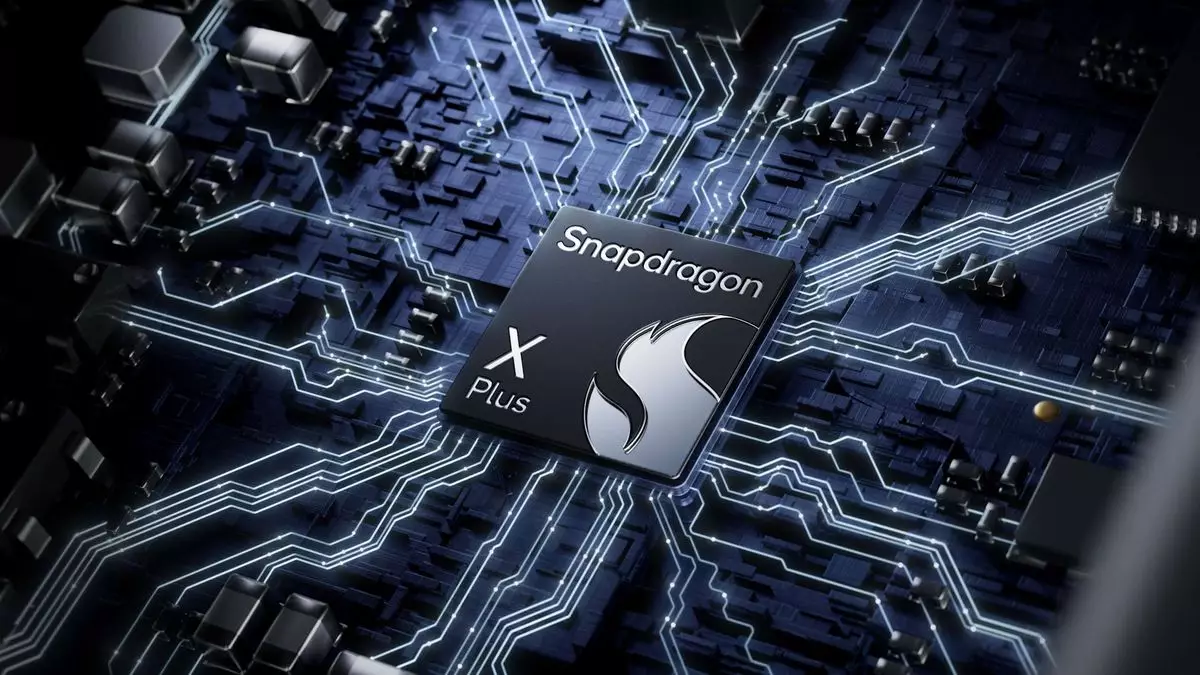The recent rumors surrounding Qualcomm’s potential acquisition of Intel’s chip design division have ignited considerable debate within the technology industry. The claims, first reported by major news outlets including Reuters and the Wall Street Journal, suggest that Qualcomm, known predominantly for its Snapdragon processors, is exploring a full takeover of the struggling chip giant, Intel. While the story is compelling, the feasibility and implications of such a deal warrant an in-depth examination.
Qualcomm has established itself as a significant player in the mobile processor market, primarily targeting smartphones and other mobile devices. With a robust market capitalization, the company has positioned itself well in the competitive landscape of semiconductor manufacturing. However, Qualcomm does face challenges regarding its revenue streams; they are relatively smaller compared to Intel, which, despite its recent struggles, still holds a substantial market share in the PC and server CPU sectors.
Intel, on the other hand, is dealing with a myriad of challenges, including fierce competition from AMD and the ongoing push towards more efficient chip designs. The company has historically been synonymous with personal computing and continues to hold significant intellectual property in the x86 architecture, the backbone of most desktop CPUs. This intellectual property is particularly crucial when considering the motivations behind Qualcomm’s rumored interest in acquiring Intel.
At the heart of Qualcomm’s potential interest lies the licensing of Intel’s x86 architecture. Currently, Qualcomm’s chips are built upon the ARM architecture, which necessitates emulation and software translation for running Windows and applications natively designed for x86 systems. By acquiring Intel, Qualcomm would not only gain access to the x86 architecture licenses but also eliminate the hurdles posed by third-party licensing and the accompanying uncertainties. In theory, this could grant Qualcomm a significant edge in both mobile and desktop computing markets.
However, the reality is far more intricate. While Qualcomm’s acquisition of Intel could provide access to this valuable architecture, the company would likely face regulatory hurdles that could complicate or outright prevent the merger. Antitrust concerns would be a primary issue, particularly given Intel’s established market presence and the potential for reduced competition should the merger occur.
Reflecting on past cases, such as Nvidia’s failed attempt to acquire ARM, it becomes evident that significant regulatory scrutiny is likely to be a major hurdle for any Qualcomm-Intel merger. The acquisition landscape has shifted towards protecting competition, with regulators becoming increasingly vigilant about maintaining a diverse semiconductor market. The complexities involved with such a merger raise questions about not only regulatory acceptance but also the operational feasibility in the face of potential scrutiny.
The scenario of Qualcomm and Intel aligning their operations or engaging in cooperative projects may be more plausible than an outright acquisition. Collaborative ventures could range from joint research initiatives to Intel manufacturing Snapdragon chips, providing an opportunity for both companies without the accompanying regulatory baggage of a merger.
Given Intel’s financial situation, which, despite its challenges, remains robust enough to withstand losses from its foundries, the company is unlikely to entertain an acquisition unless it significantly benefits its long-term strategy. Intel continues to refine its core operations while facing down competition, suggesting that while partnerships may be on the table, the likelihood of a takeover remains slim.
As such, the ongoing discussions about Qualcomm’s interest could serve more as a signal for market positioning rather than a tangible plan of action. The relationship between the two companies may evolve into a partnership aimed at improving their competitive standings, particularly in an environment that increasingly favors collaboration over outright dominance.
While Qualcomm’s interest in acquiring Intel presents a tantalizing narrative within the tech industry, the reality is fraught with complexities that render an outright merger unlikely. Regulatory barriers, financial considerations, and market dynamics play a substantial role in shaping the feasibility of such a transaction. As discussions continue, the best that can be hoped for may be strategic partnerships rather than a full acquisition, offering both companies a pathway to enhance their competitive edge without creating unduly monopolistic scenarios. Whether or not this situation evolves into something significant, it remains clear that the semiconductor landscape is constantly shifting, and Qualcomm and Intel must navigate these changes carefully to thrive.

